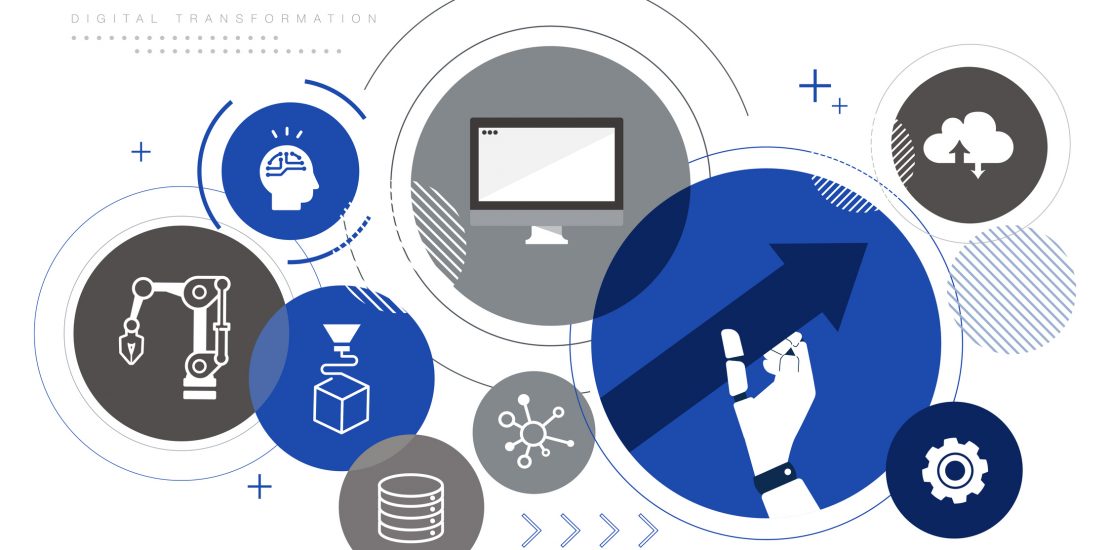How Digital Transformation Is Leading Innovation
- October 27, 2022
- Posted by: Velosi Author
- Category: Data Mgmt & Analytics

What is Digital Transformation?
Digital transformation incorporates technology into the entire business to effect comprehensive change. In broad terms, we define digital transformation as integrating digital technologies into all areas of business, leading to fundamental changes in the way businesses work and the way they provide value to customers. It is an evolution in the way businesses interact with their customers and incorporates an extensive result of a long-term strategic initiative that involves changes in business operations, organizational structures, processes, and culture.
The digital transformation project may not be completed shortly as there are many challenges ahead of us. Still, it is important to start preparing well in advance so that we can gain the most out of this change. Essentially, digital transformation describes the process whereby a company forms a strategy for adopting advanced technologies to enhance the business and respond to consumers changing demands.
In other words, digital innovation is the use of digital technologies and applications to enhance the productivity of the business processes and the workforce, enhance customer experiences, and implement new products or business models. Relating to innovation, allowing companies to keep pace with competitors while continuously adopting new technologies that enhance the customer experience. Digitalization/Innovation is using digital technologies to transform business processes and projects. For example, training employees to work on a new software platform designed to help ship products more quickly or teaching employees the latest CMMS software to sell and enhance business efficiency. Companies can leverage digital innovations to increase efficiency among employees through automated processes.
Prioritizing digital innovation will ensure you are consistently providing superior experiences for customers across every facet of your business. Analyze organizational and team capabilities needed to support digital-ready businesses Build up innovation capabilities.
According to some authors’ research, most major legacy companies were using digital technologies to improve parts of their businesses incrementally. Through interviews, training, and surveys with hundreds of executives, the authors examined how companies are using emerging technologies, like IoT and artificial intelligence, to transform their operations.
Digital innovation is now playing a pivotal role in changing the landscape of businesses at a fast pace. It is more than a strategy for using technology; a strategy for using technology to power new business models, new products and services, and new strategies that drive corporate growth. Furthermore, this requires leaders to look at, and potentially transform, every component of their businesses.
Digital technologies serve employees’ and business partners’ double success when organizations opt for transformation for the good. While digital transformations will differ greatly depending on an organization’s particular challenges and needs, there are several consistent, shared techniques that should be taken into consideration.
While they are truly related, today’s business leaders must understand the distinction between innovation and transformation. Innovation and Transformation are often used synonymously, but in a digital world, the two are distinct. In others, innovation may drive transformation, but that reciprocal cause-and-effect relationship is often overlooked because the two are thought to stand for the same thing.
How Digital Transformation Supports Innovation at Various Stages of the Idea Lifecycle
Digital transformation has come to the forefront of business strategies in recent years. It is a movement that is sweeping across every industry, eventually transforming the way we use technology, and communicate with customers. In this process, ideas become valuable in new ways, making innovation more widespread.
Transformation journeys can be complicated when a direction is unclear. Because of necessity, businesses may struggle with setting a clear purpose and goals to successfully transform. In addition to maximizing the company’s effectiveness while they are there, most leaders will want to make sure the changes they have made are sustainable once they are gone, and they left the organization better off, from a perspective of its market position, branding, and long-term identity. To the extent digital transformation helps achieve any of these, we must think beyond it.
Digital Transformation of Traditional Businesses
Traditional business practices are constantly being tested in the face of evolving technologies, and contemporary companies must acknowledge technology potential and embrace it when it is time to make changes. Executives need to identify business opportunities in emerging technologies and develop winning strategies accordingly, and they must also have the ability to lead effective initiatives for digital transformation and innovation. If companies are going to keep up with the fast pace of digital changes today, they must strive to improve effectiveness through technology where it can. In a world that is increasingly driven by digital technologies and innovation, digital initiatives are simply too important because technology plays such an integral part in the organization’s ability to adapt to the marketplace and continuously deliver more value to customers.
The Future is Now – Embrace Digital Transformation and Innovation in Your Organization
Many organizations are creating digital transformation hype in their company by talking about the future of their organization. In reality, digital transformation is happening, for instance, we are automatically indulging in digital transformation activities, and to be successful one must regulate innovative solutions in the organization.
Every industry will be transformed by technological advances, so it’s not just about chasing the latest trends on social media or measuring KPIs (key performance indicators). Organizations should look at what they do today and how technology can create a better experience for their customers tomorrow enhancing business productivity.
Please contact us for more information and assistance.


